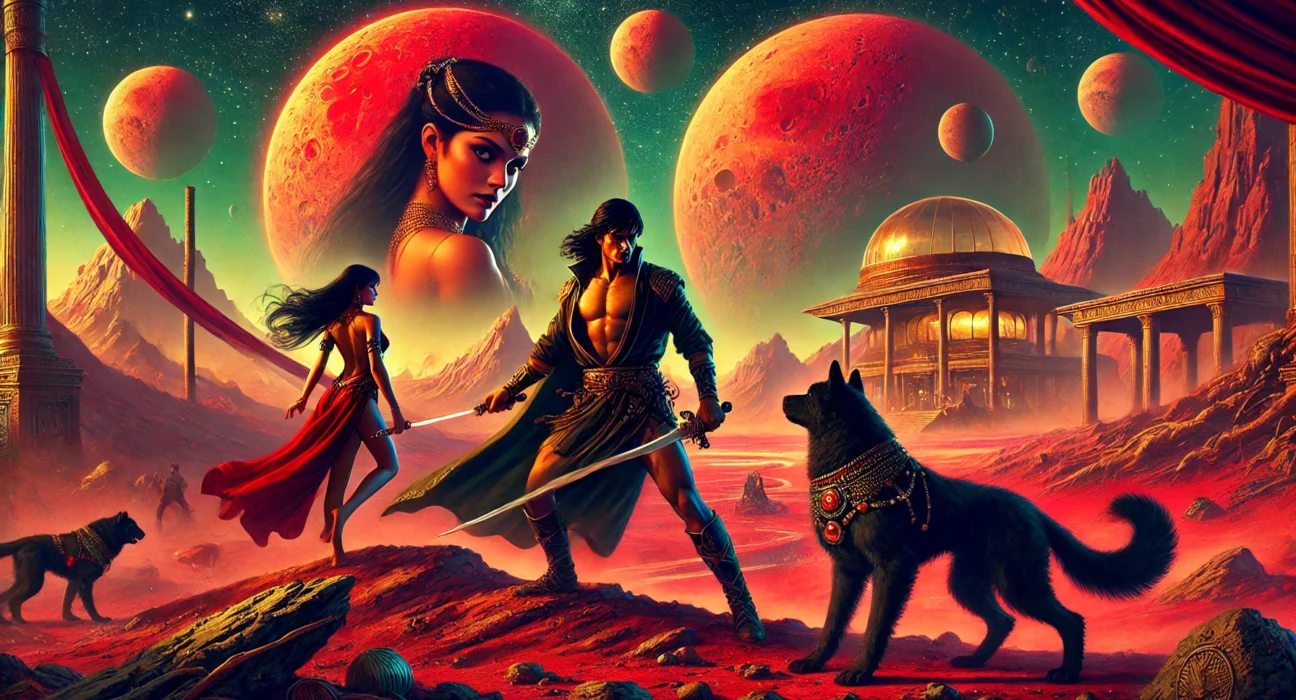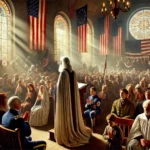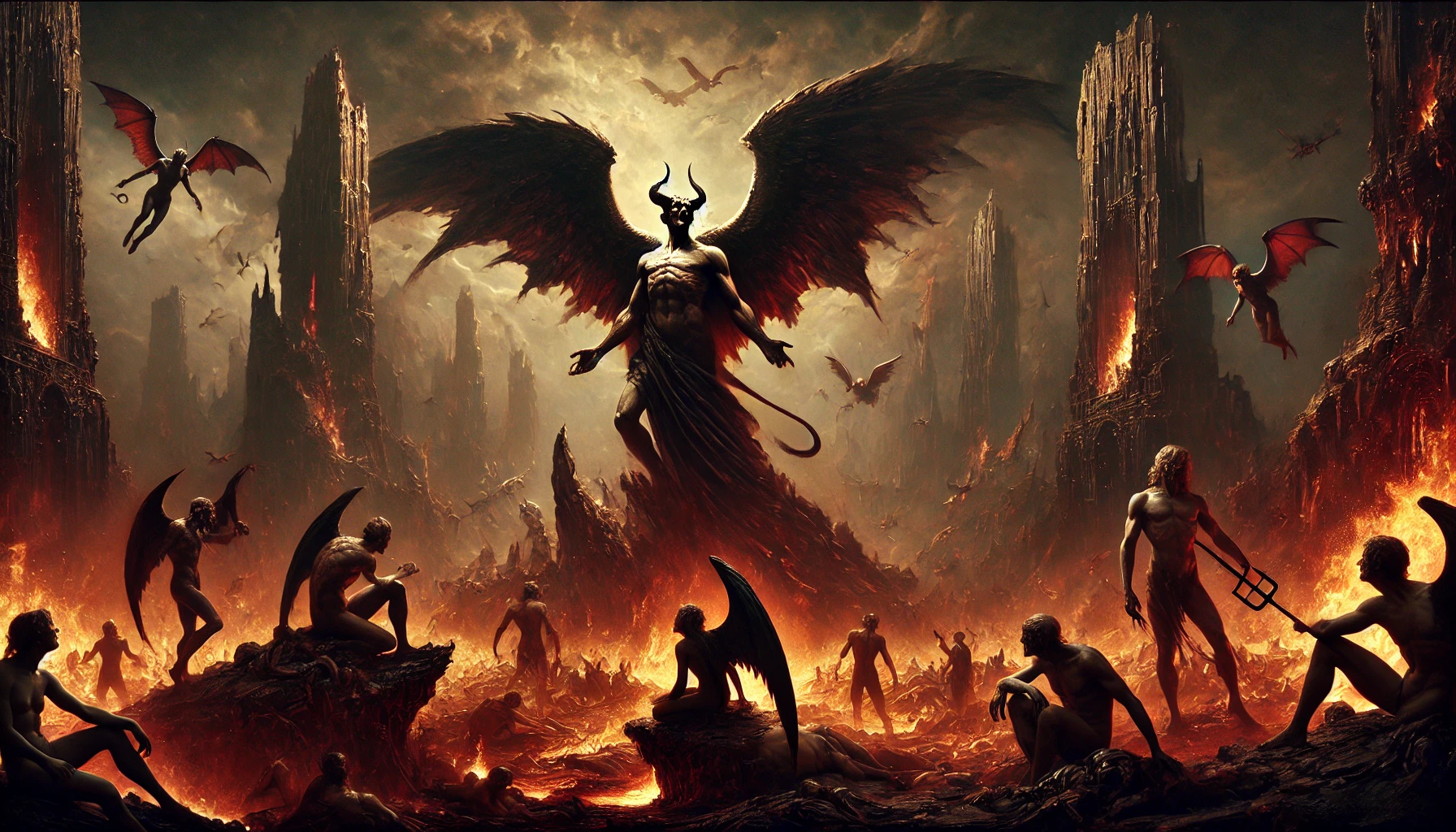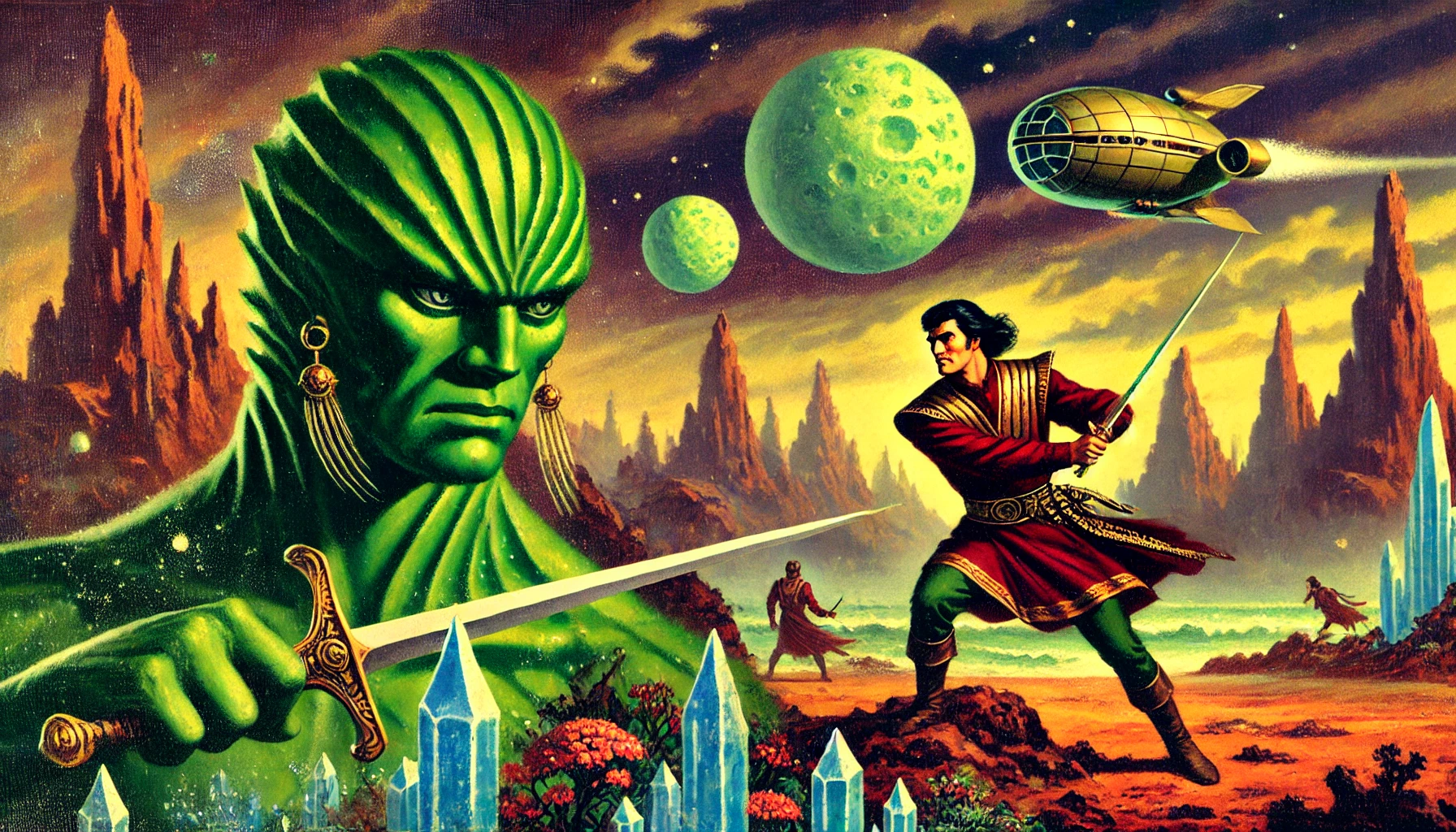“The Warlord of Mars” by Edgar Rice Burroughs, first published in 1918, is the third novel in the Barsoom series. The story continues the adventures of John Carter, a Civil War veteran who finds himself transported to Mars, known as Barsoom to its inhabitants. The novel follows Carter’s relentless quest to rescue his beloved Dejah Thoris, who is imprisoned in the Temple of the Sun. Burroughs’ imaginative world-building, vibrant characters, and thrilling action sequences have captivated readers for over a century.
Plot Summary
In the shadowy depths of the Valley Dor, under the moons of Mars, John Carter moves stealthily, his every sense attuned to the trail of the black dator, Thurid. For six long Martian months, he has haunted the Temple of the Sun, where Dejah Thoris, the Princess of Helium, lies entombed. A single year must pass before the temple revolves to reveal her prison once more. Half that time has already slipped away, and the waiting gnaws at him. Desperation gives way to hope when Carter catches sight of Thurid, creeping through the valley with the sinister precision of a man on a dark mission. Driven by the need to uncover Thurid’s intent and fearing for his beloved, Carter follows in silence, keeping to the shadows as they edge closer to the River Iss.
The River Iss, once worshipped as the river of life, now reveals its darker nature as a passage into the underworld. Thurid glides on its surface in a small skiff, hugging the shoreline. Carter, with his faithful Martian hound, Woola, not far behind, stealthily pushes his own boat into the water, keeping a careful distance. They move deeper into the labyrinthine heart of Mars, through a passage beneath the Golden Cliffs. The phosphorescent glow of the rock provides a faint, eerie light, illuminating the path of the wicked Thurid. Carter watches as the black dator meets with Matai Shang, Father of Therns. The two engage in a whispered conversation, the substance of which Carter can only guess. Yet the alliance of these sworn enemies is troubling enough. Their conspiracy threatens not just him, but all he holds dear.
John Carter trails them, his heart burning with urgency. Thurid and Matai Shang lead him through treacherous terrain. The passages wind and turn, seemingly endless. The air grows heavy with the scent of decay, a grim reminder of the temple’s dark past. He navigates rapids, battles against the river’s fierce current, and dodges the dangers that lurk in the darkness. It is a perilous journey, but Carter’s resolve is unshakeable. His love for Dejah Thoris propels him forward, his mind fixed on her rescue. The temple looms ahead, a fortress of secrets and death, where only the most determined would dare to venture.
The Temple of the Sun is a place of torment and beauty. Its revolving chambers are a masterpiece of engineering, designed to imprison those within until a Martian year has passed. Carter knows this is where Dejah Thoris is held, along with Thuvia of Ptarth and Phaidor, the daughter of Matai Shang. Finding a hidden entrance beneath the temple, Carter uses a radium torch he took from one of the Therns to decipher the cryptic code guarding its entrance. The door slides open, revealing a spiraling stairway that leads up into the temple’s heart. He moves cautiously, every step echoing in the silent corridors, every shadow a potential threat.
Inside, he confronts Lakor and other Thern warriors. They are surprised to see him, but not for long. Carter’s reputation precedes him, and they know the blade in his hand is not merely for show. A fierce battle ensues. Carter’s sword dances through the air, a blur of motion as it deflects blows and strikes with deadly precision. He forces the Therns to yield, extracting information about the temple’s secrets and the plans of Thurid and Matai Shang. They speak of hidden passages and deadly traps, but their words are laced with deceit. Carter senses the danger but presses on. Time is against him.
Deeper into the temple he goes, each chamber more daunting than the last. Venomous reptiles slither across the floor of one room, a writhing mass of death that would deter any lesser man. But Carter is not deterred. He surveys the room, noting the radium lights that form an invisible barrier the creatures dare not cross. With Woola’s help, he finds a way across, leaping to a narrow gallery that skirts the edge of the chamber. The next test is a series of spinning, revolving rooms, designed to confuse and trap. Carter’s keen mind and quick reflexes guide him through the maze, always one step ahead of the mechanisms meant to ensnare him.
At last, he reaches the pinnacle of the temple where Dejah Thoris is held. There, in a grand chamber, he finds Thurid and Matai Shang. A fierce battle ensues, the clang of swords reverberating through the chamber. Carter fights with the ferocity of a man with everything to lose. Thurid’s dark eyes gleam with malice as he strikes with skill and cunning, but Carter is faster, his blade a blur of motion. With a final, powerful thrust, Carter overcomes Thurid, sending him sprawling to the ground. Matai Shang, seeing his ally fall, tries to flee, but Carter’s determination is unyielding. He brings the Father of Therns to his knees, ending the threat to Dejah Thoris and all of Mars.
In the aftermath, Carter rushes to Dejah Thoris. She is pale, weakened by her ordeal, but alive. Relief floods through him as he takes her in his arms. Her eyes, as brilliant as the Martian skies, meet his, and in that moment, all the fears and dangers melt away. Beside her, Thuvia of Ptarth stands, a look of admiration and gratitude in her gaze. Phaidor, who had once been their enemy, now watches in silence, her face a mask of conflicting emotions.
The journey back to Helium is long and fraught with danger, but this time, Carter is not alone. With Dejah Thoris at his side and Woola ever vigilant, they make their way through the Valley of Lost Souls, across the desolate landscapes of Mars. The once daunting path seems less so with each step they take together. They encounter tribes of the valley, fierce warriors who challenge their passage, but Carter’s reputation as a formidable warrior and the presence of the Princess of Helium ensure their victory.
Upon their return to Helium, John Carter is hailed as the Warlord of Mars, a title befitting the man who has conquered not only enemies but also the very heart of the planet. His bravery and love for Dejah Thoris are celebrated, his leadership securing peace among the nations of Barsoom. The temple’s secrets have been revealed, its prisoners freed, and its captors defeated.
In the quiet moments that follow, Carter and Dejah Thoris stand together, gazing out over the crimson plains. The trials they faced, the dangers they overcame, have only strengthened the bond between them. In the vastness of Mars, they have found a love that transcends the barriers of worlds and the passage of time. It is a love that will endure, a beacon in the ever-changing landscape of the red planet.
Main Characters
- John Carter: The protagonist, a former Earthman now a revered warrior on Mars. His determination, combat skills, and strategic mind drive the narrative.
- Dejah Thoris: The Princess of Helium, whose imprisonment sets the story in motion. Her beauty, intelligence, and unwavering spirit are central to Carter’s quest.
- Thurid: A black dator of the First Born, whose enmity with Carter fuels much of the conflict. His cunning and ambition make him a formidable antagonist.
- Matai Shang: The Father of Therns, a high priest with a vested interest in maintaining his power. His alliance with Thurid against Carter underscores the novel’s central conflict.
- Woola: Carter’s loyal Martian hound, a fierce and faithful companion whose bravery and instincts often save the day.
Theme
- Love and Loyalty: Carter’s quest to rescue Dejah Thoris underscores the themes of enduring love and loyalty. His unwavering dedication is a testament to the strength of their bond.
- Courage and Honor: The novel celebrates martial valor and personal honor. Carter’s bravery in the face of insurmountable odds exemplifies these virtues.
- Conflict and Reconciliation: The shifting alliances and enmities reflect the complex nature of conflict and the possibility of reconciliation for a greater good.
- Exoticism and Exploration: Burroughs’ vivid descriptions of Mars’s landscapes, cultures, and creatures evoke a sense of wonder and adventure, central to the novel’s appeal.
Writing Style and Tone
Edgar Rice Burroughs’ writing style in “The Warlord of Mars” is characterized by vivid descriptions, fast-paced action, and a blend of romance and adventure. His narrative technique immerses readers in the exotic, perilous world of Barsoom, making them feel as though they are alongside John Carter in his quest.
Burroughs employs a heroic tone, celebrating the virtues of bravery, loyalty, and love. His language is both grandiose and accessible, making the story both epic in scope and deeply personal. The novel’s tone is consistently adventurous, with moments of tension and triumph balanced by the underlying emotional drive of Carter’s love for Dejah Thoris.
We hope this summary has sparked your interest and would appreciate you following Celsius 233 on social media:
There’s a treasure trove of other fascinating book summaries waiting for you. Check out our collection of stories that inspire, thrill, and provoke thought, just like this one by checking out the Book Shelf or the Library
Remember, while our summaries capture the essence, they can never replace the full experience of reading the book. If this summary intrigued you, consider diving into the complete story – buy the book and immerse yourself in the author’s original work.
If you want to request a book summary, click here.
When Saurabh is not working/watching football/reading books/traveling, you can reach him via Twitter/X, LinkedIn, or Threads
Restart reading!








